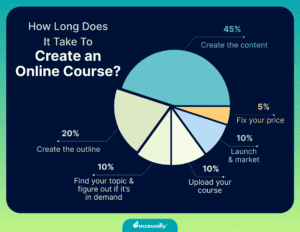Introduction and Overview: Mastering Drip Campaigns for Course Success
When it comes to online course delivery, your email drip campaign isn’t just another marketing tool – it’s the invisible mentor guiding your students toward completion. The way you structure these automated sequences can make the difference between engaged learners who cross the finish line and those who drift away mid-journey.
Let’s be clear about what we’re really trying to achieve here. A well-optimized drip campaign for course completion serves multiple crucial functions: it maintains momentum, addresses potential roadblocks before they become obstacles, and creates a sense of accountability that many online learners desperately need. Think of it as creating a virtual teaching assistant who’s available 24/7 to nudge, encourage, and support your students.
There’s no single ‘best’ approach to structuring these campaigns, because every course and student cohort has unique needs. However, successful drip sequences typically share common elements: strategic timing, personalized content triggers, and carefully crafted messaging that anticipates student challenges at each stage of the learning journey.
Understanding your course completion data is essential before diving into optimization. What percentage of your students currently complete the course? Where do most drop-offs occur? These metrics will become your baseline for measuring improvement. Many course creators are surprised to discover that simple adjustments to email timing and content can boost completion rates by 15-30%.
The most effective drip campaigns operate on multiple levels simultaneously. They deliver practical course-related content, provide emotional support and motivation, and create a sense of community among learners. For example, you might combine module-completion triggers with time-based check-ins and behavioral responses to student activity (or inactivity).
Foundation Concepts and Planning
The way you structure your drip campaign impacts everything about your course completion rates. Before diving into email sequences and automation, let’s establish the core foundations that will set your campaign up for success. Understanding your students’ journey is the first critical step in creating an effective drip strategy.
Start by mapping out your course’s natural progression points. These are the key moments where students typically need additional support or motivation. For a six-week course, you might identify critical touchpoints at the introduction, first major assignment, midpoint challenge, and final project. Each of these moments represents an opportunity to engage through targeted email communication.
When planning your drip sequence, consider the psychological aspects of learning. Students often experience predictable emotional highs and lows throughout their course journey. The initial excitement of starting something new gradually gives way to the challenge of maintaining momentum. Your email campaign should anticipate and address these patterns, providing encouragement and resources at precisely the right moments.


Timing is everything in drip campaign optimization. While daily emails might work for a short, intensive course, they could overwhelm students in a longer program. Consider spacing your emails based on your course’s natural rhythm. For example, send check-in emails every three days during intensive modules, but scale back to weekly touchpoints during independent project work.
Content segmentation plays a crucial role in maintaining engagement. Rather than sending identical emails to everyone, create separate tracks based on student behavior. Active students might receive advanced tips and bonus materials, while those falling behind get more supportive, re-engagement focused content. This personalized approach shows students you understand their unique challenges.
Data collection and analysis should be built into your foundation plan. Decide which metrics matter most – open rates, click-through rates, completion milestones, or student feedback. These insights will guide your ongoing optimization efforts. Set up tracking systems before launching your campaign to ensure you’re capturing all relevant data points.
Remember that your drip campaign shouldn’t exist in isolation. Integrate it with your course platform, community spaces, and other communication channels. This creates a cohesive experience where emails complement and enhance the learning journey rather than feeling like separate, disconnected messages.
Finally, build flexibility into your foundation. No one wants to be locked into a rigid system that can’t adapt to student needs. Plan for contingencies and create alternative email paths that can accommodate different learning speeds and styles. This adaptability will prove invaluable as you refine your approach based on real-world implementation.
Step-by-Step Implementation Guide
Let’s dive into the nitty-gritty of optimizing your drip campaign for better course completion rates. The way you structure your email sequence impacts everything from student engagement to their ultimate success. Start by mapping out your course milestones – these are the key achievements that indicate real progress in your students’ journey.
Begin with a compelling welcome sequence that sets clear expectations. Your first email should arrive within 15 minutes of enrollment, containing login credentials and a quick-win activity that takes less than 5 minutes to complete. This immediate engagement is crucial for building momentum. Follow up 24 hours later with a roadmap email that outlines the journey ahead.
When designing your milestone-based emails, think in terms of both time and achievement triggers. For example, send encouragement emails when students complete their first module, but also have time-based check-ins for those who haven’t logged in for a week. Your drip campaign should function like a responsive coach, adapting to different student behaviors.
Pay special attention to your email timing and frequency. There’s no single ‘best’ schedule for everyone, but start with 2-3 emails per week during the first month, then scale back to weekly touches. Monitor your open rates and engagement metrics to fine-tune this cadence for your specific audience.
Craft your subject lines with intention. Instead of generic “Module 2 is ready” messages, use action-oriented phrases like “Ready to master [specific skill]?” or “Your next breakthrough awaits.” Include the recipient’s name and course-specific terminology to boost relevance and open rates.
Build in automated re-engagement sequences for students who fall behind. If someone hasn’t logged in for 10 days, trigger a sequence of three carefully crafted emails: first expressing concern, then sharing a success story, and finally offering a concrete way to get back on track – perhaps a quick 15-minute catch-up session.
Incorporate social proof throughout your campaign. When students complete certain milestones, ask them to share their wins. Then, with permission, weave these testimonials into your drip sequences for future students. This creates a powerful motivation loop and helps new students envision their own success.
Remember to segment your audience based on engagement levels. Create separate tracks for high achievers who complete modules ahead of schedule, average-pace learners, and those requiring additional support. This allows you to provide more targeted encouragement and resources where they’re needed most.
Finally, implement a completion celebration sequence. When students finish the course, trigger a series of emails that not only congratulate them but also guide them toward implementing their new knowledge and potentially exploring your advanced offerings. This transition period is crucial for cementing their learning and maintaining their momentum.
Advanced Strategies and Techniques
When it comes to optimizing drip campaigns for course completion, the way you structure your email sequence impacts everything from student engagement to ultimate success rates. Let’s dive into some sophisticated approaches that go beyond basic automation.
First, consider implementing dynamic content segmentation based on student behavior. Rather than sending the same follow-up email to everyone who hasn’t completed Module 3, create separate sequences for students who haven’t started versus those who started but didn’t finish. This granular approach allows you to address specific obstacles each group faces.
| Feature | AccessAlly | Alternative |
|---|---|---|
| Course Creation | ✅ Advanced drag-drop builder | ❌ Basic editor only |
| Member Management | ✅ Built-in CRM system | ❌ Requires third-party tools |
| Payment Processing | ✅ Multiple gateways supported | ❌ Limited options |
| Integration | ✅ WordPress native | ❌ External platform |
One particularly effective technique is what I call “momentum matching.” This involves analyzing when your students are most active in the course and timing your emails to align with these natural engagement patterns. For example, if data shows most students log in during evening hours, scheduling your encouragement emails for late afternoon can provide that perfect nudge when they’re most likely to take action.
The key to creating captivating online courses lies in your ability to anticipate and remove obstacles before they become roadblocks. Consider implementing “completion triggers” – automated check-ins that activate when a student spends significantly longer than average on a particular lesson. These targeted interventions can help identify struggling students before they become discouraged and drop out.
Another advanced strategy involves creating “micro-wins” throughout your email sequence. Instead of focusing solely on module completion, celebrate smaller achievements like watching the first video, completing the first worksheet, or participating in community discussions. These small victories build confidence and maintain momentum.
Social proof integration deserves special attention in your drip campaign strategy. Rather than generic success stories, segment your social proof based on where students are in their journey. Someone struggling with the first module needs to hear from students who overcame similar initial challenges, while those in advanced modules benefit from stories about applying the knowledge in real-world situations.
Finally, don’t overlook the power of pattern interrupts in your email sequence. If you notice engagement dropping after a certain number of standard-format emails, introduce a different type of content – perhaps a quick video message, a podcast snippet, or an interactive quiz. These variations help maintain interest while still driving toward completion goals.
Remember that optimization is an ongoing process. Set up regular review points to analyze your completion data and adjust your strategies accordingly. The most successful drip campaigns evolve with your students’ needs and respond to changing engagement patterns.
Common Challenges and Solutions in Drip Campaign Optimization
When optimizing drip campaigns for course completion, you’ll likely encounter several recurring challenges that can impact student engagement and progress. The way you handle these obstacles directly impacts your course’s success rate, so let’s explore practical solutions to the most common issues.
First, many course creators struggle with timing their email sequences effectively. Students often feel overwhelmed when receiving too many emails too quickly, yet sparse communication can lead to disengagement. The sweet spot typically lies in starting with more frequent touches (2-3 times per week) during the first two weeks, then gradually tapering to weekly check-ins. Pay attention to your completion metrics and adjust accordingly – if you notice drop-offs after specific emails, consider adjusting your timing.
Content relevance presents another significant challenge. Students at different stages need different types of support, but creating personalized content for every scenario can feel overwhelming. Instead of trying to cover everything, focus on developing adaptive pathways. For example, if a student hasn’t logged in for a week, trigger a specialized re-engagement sequence that addresses common obstacles and provides motivation to return.
Technical hurdles often frustrate both course creators and students. Login issues, video playback problems, or confusion about accessing materials can derail even the most motivated learners. Your drip campaign should include proactive technical support emails that anticipate common issues. Consider creating short tutorial videos or step-by-step guides that address frequently asked questions before they arise.
Student motivation tends to wane over time, particularly in longer courses. Combat this by incorporating social proof and success stories throughout your email sequence. Share specific examples of past students who overcame similar challenges, and include concrete tips they used to stay on track. No one wants to feel like they’re struggling alone, so building a sense of community through your emails can significantly impact completion rates.
Finally, many course creators struggle with tracking and measuring the effectiveness of their drip campaigns. Implement a systematic approach to monitoring key metrics like open rates, click-through rates, and completion milestones. Set up automated tags or triggers that help you identify where students typically get stuck, then adjust your email content and timing to provide extra support at these critical points. Remember that optimization is an ongoing process – what works for one cohort might need adjustment for the next.
Best Practices and Optimization
The way you structure your drip campaign impacts everything from student engagement to completion rates. Let’s dive into proven optimization strategies that keep students progressing through your course material with purpose and momentum.
Start by mapping your drip campaign to your students’ natural learning rhythm. Rather than releasing content on a rigid weekly schedule, consider implementing adaptive release timing. For example, if data shows students typically complete Module 1 in five days, schedule Module 2’s release for day six. This creates a sense of achievement while maintaining momentum.
Email subject lines deserve special attention in your optimization efforts. While “Module 3 Now Available” might seem straightforward, it lacks the motivational punch of “Ready to Master Advanced Techniques? Module 3 Awaits.” Track open rates and experiment with different approaches – some students respond better to curiosity-driven subjects, while others prefer clear, action-oriented language.
Personalization goes beyond just using a student’s first name. Segment your drip campaigns based on engagement levels and progress markers. For instance, create separate email streams for quick completers versus those who need more time. According to Campaign Monitor’s research, personalized email campaigns see 26% higher open rates.
Consider implementing a “completion countdown” strategy in your drip sequence. When students are 75% through the course, increase email frequency slightly and focus messaging on the finish line. Include social proof from past graduates and highlight specific benefits of completing the full program.
| Feature | Benefit | Use Case |
|---|---|---|
| Drip Content | Increases engagement | Course progression control |
| Quiz & Assessments | Validates learning | Student progress tracking |
| Certificates | Motivates completion | Professional development |
| Community Access | Builds loyalty | Student interaction |
Monitor and adjust your drip timing based on actual student behavior. If you notice a significant drop-off after a specific module, that’s your cue to review both the content and the timing of your drip sequence. Sometimes, simply adding a mid-week check-in email can provide the encouragement needed to keep students on track.
Finally, regularly audit your drip campaign’s effectiveness by tracking not just completion rates, but also time-to-completion and engagement patterns. Use these insights to refine your approach and create a more effective learning journey for future cohorts.
Case Studies and Examples: Real-World Drip Campaign Success Stories
Let’s dive into some illuminating examples of how course creators have optimized their drip campaigns for better completion rates. When used strategically, these case studies can provide valuable blueprints for your own campaign optimization efforts.
Take Sarah, a business coach who noticed her 12-week leadership program had a steep drop-off around week four. By analyzing her data, she discovered students felt overwhelmed by the content pace. She restructured her drip campaign to include “catch-up weeks” every third module, allowing students time to implement learnings and complete assignments. This simple adjustment increased her completion rates from 34% to 71%.
Another standout example comes from Marcus, a language learning instructor who transformed his completion rates through behavioral triggers. Instead of relying solely on time-based drips, he implemented completion-triggered emails. When students finished a module, they received a congratulatory email with a preview of upcoming content and a small “quick win” exercise. This approach maintained momentum and boosted engagement by 43%.
Consider the case of Elena’s yoga teacher training program. She noticed students often struggled with the theoretical portions of her course. She implemented a “companion drip sequence” that delivered bite-sized theory explanations three days before each major lesson. These preview emails included simple analogies and real-world applications, preparing students mentally for upcoming complex concepts. Her completion rates jumped from 58% to 82%.
The Tech Academy provides another fascinating example of drip campaign optimization. They implemented what they call the “checkpoint system” – strategic check-in emails triggered when students haven’t logged in for five days. These emails contain quick 5-minute refresher exercises rather than guilt-inducing reminders. This approach reduced their dropout rate by 27% and increased course completion by 39%.
Perhaps most impressive is the case of Maria’s digital marketing course. She created parallel drip sequences for different learning styles – one heavy on video content, another focused on written materials, and a third emphasizing practical exercises. Students could switch between tracks at any time, ensuring they received content in their preferred format. This flexibility resulted in a remarkable 88% completion rate.
These success stories highlight a crucial truth: effective drip campaigns require constant refinement based on student behavior and feedback. The most successful course creators consistently monitor engagement metrics, gather student feedback, and adjust their sequences accordingly. Your campaign’s effectiveness lies not just in its initial setup, but in your willingness to evolve it based on real student needs and behaviors.
Future Considerations and Conclusion
As we look ahead to the evolution of drip campaigns for course completion, it’s crucial to recognize that automation technology and student expectations continue to advance rapidly. The way you structure your drip campaigns today will impact everything from student success rates to your course’s long-term sustainability. Consider implementing AI-powered personalization that adapts email timing based on individual student engagement patterns.
Data analytics will play an increasingly vital role in optimizing your drip sequences. Start collecting and analyzing metrics beyond basic open rates – look at time-of-day engagement patterns, content preference indicators, and correlation between email interactions and course progress. This deeper understanding will help you refine your approach and create more effective campaigns.
Mobile optimization isn’t just a trend – it’s becoming the primary way students interact with course content. Ensure your drip campaigns are designed with mobile-first functionality, including shorter paragraphs, thumb-friendly buttons, and responsive images that enhance rather than hinder the mobile experience. Consider implementing SMS integration for time-sensitive reminders and encouragement messages.
Interactive elements within emails are gaining traction as effective engagement tools. Experiment with embedded quizzes, progress checks, and quick feedback forms that students can complete without leaving their inbox. These micro-interactions keep students connected to their learning journey and provide valuable data for your campaign optimization.
Remember that successful drip campaigns aren’t static – they require regular maintenance and updates. Schedule quarterly reviews of your automation sequences, checking for outdated content, broken links, and opportunities to incorporate new course materials or student feedback. There’s no single ‘best’ approach to drip campaigns, but staying adaptable and student-focused will keep you ahead of the curve.
As you move forward with your drip campaign strategy, focus on creating a balance between automation and authenticity. The most effective campaigns maintain a personal touch while leveraging technology to scale your impact. By staying attuned to student needs, embracing emerging technologies, and continuously refining your approach, your drip campaigns will evolve into powerful tools for driving course completion and student success.







